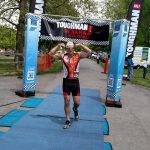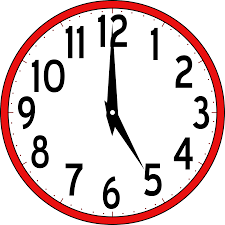Rob Bell's Blog, page 21
February 10, 2017
How to Become a Paid Speaker


Here’s How to Become a Paid Speaker

I spoke to head coach Mary Ann Sedor who is the founder of Intent Multisport. She is an awesome “all-in” person and I interviewed her for my next upcoming book- How to Crush a 1/2 Ironman in ^Less Than^ 2 Weeks.
I sent her a video clip about my experience completing a 1/2 Ironman, and she commented how she connected with me as a speaker.
That’s always nice to hear since I’m an approval junkie sometimes. I mean who doesn’t like to hear that their stuff is awesome?
I told her my “style” was from my very first time speaking.
I was in a drunk-driving accident in college. I also fell off an 80-foot cliff. It was not the best freshman year.
My accident occurred on April 20th in the early evening as I was attempting to drive back to college.
I crossed the center line and hit another car head-on.
I never wanted to hurt anyone and it was a horrible mistake. Thank God I was the only person injured in that crash.
I was lucky.
Just a few weeks later as I tried to finish the semester, I received a call from someone in charge of Prom Promise at a local high-school. They wanted me to speak on drinking and driving.
My jaw was broke, my arm in a sling, and it would be at a rival high-school where I still knew some of the people.
It was humbling, but I could not say “no.”
In front of a thousand high-school students, I told my story. And that’s when and where my speaking career began.
My mess was my message.
I realized that people enjoy hearing about your successes, but they identify with your struggle.
Here’s how you can become a paid speaker.
Be real and be genuine.–
Not for your ego’s sake, but because we connect with the vulnerabilities of suffering.
Develop a 15-minute talk.–
Give your talk from a personal example and speak about the one story you probably don’t want to share either.
Give this 15-minute talk away.–
Seek out Optimists clubs, Rotary Clubs, and Chamber of Commerce to perfect your talk. In doing so someone in attendance will want to hire you to speak to their own company or team.
Video your talk.-
Every year, I give a Tedx type talk, called Sparks. Here’s a compilation of these talks that serve as great marketing. With video, people can watch you in action and it takes the guesswork if you’re any “good.”
Create a one-page speaker sheet.-
Invest in an interactive PDF that shows your work, expertise, and topics.
When you are asked to speak, charge.–
If you’re invited to speak, it simply means that you’re ready to become a paid speaker. If you don’t charge, then you’re not mentally ready to get paid for speaking and more work on your head trash is needed. It’s better to disappoint someone who wants you to speak, then to be resentful that you keep doing it for free.
Dr. Rob Bell is a Sport Psychology Coach. His company DRB & associates is based in Indianapolis. Some clients have included: University of Notre Dame, Marriott, and Walgreens. Check out all the books on Mental Toughness-
January 28, 2017
(Video) What We Can Learn From Every Super Bowl Champion

What We Can Learn From Every Super Bowl Champion
Download Infographic- 5 Unexpected Reactions to Winning the Super Bowl.
Success leaves clues. It’s the reason I wrote 50 Ways to Win: Pro Football’s Hinge Moments
It was amazing to discover proof why the process really is more important than the product and that there was only one common theme amongst every Super Bowl Champion. What a insightful discover about what we can learn from every super bowl champion.
Dr. Rob Bell is a Sport Psychology Coach. His company DRB & associates is based in Indianapolis. Some clients have included: University of Notre Dame, Marriott, and Walgreens. Check out all the books on Mental Toughness-
January 27, 2017
(VIDEO) What Blocks Us From Mental Toughness

What Blocks us from Mental Toughness
One of the most difficult things in life is to let go of old ideas and ways of thinking. The sexy term nowadays is having a growth mindset compared to a fixed mindset. Here’s how it plays out.

Hope you enjoy this brief Mental Toughness video.
“The secret it to move with the punch” – Jake LaMotta
Dr. Rob Bell is a Sport Psychology Coach. His company DRB & associates is based in Indianapolis. Some clients have included: University of Notre Dame, Marriott, and Walgreens. Check out all the books on Mental Toughness-
January 21, 2017
Why I dig coschedule
I write tons… Every single day in fact for 1 hour. It’s how I’ve published 5 books on mental Toughness as well as a weekly blog post. However, I had an issue getting my content to enough people, until I discovered coschedule. Co-schedule allows me to write my blog post and then be able to post it whenever and wherever I want just using their schedule tool. It’s a game-changer.
The coolest feature is that it allows me to schedule posts for any-time of the day on multiple days, so it was so helpful when I had an event to promote and I could schedule it several times during the day. It has a unique tool as well called “best time” that even picks the best time of day to post your content.
Here’s one of my favorite parts, I can easily see the statistics from every one of my posts and check the reads, likes, and twitter shares. Being able to discover what my readers’ enjoy the most is a huge help with as much blogging as I do.

Check it out for yourself- Coschedule
But, don’t just listen to me- Here’s a demo below about how you can use it.
January 20, 2017
Steps 1 & 2 of Building Mental Toughness

Would you know about Building Mental Toughness when you saw it?
Example #1-
It was May 7th on a Saturday evening and I was planning my schedule to meet with my professional athletes for later in the month.
Then, an invite for a ½ Ironman came across my email.
The race was in 2 weeks. On May 20th, I crushed a ½ Ironman in less than 2 weeks.

Example #2-
It was beginning of August and I got a call from a good amateur tennis player who lived in California.
However, at that time, he was suspended from the USTA because of his on-court behavior.
After working together on Mental Toughness for exactly 1 year, he became the first unseeded player ever to win the USTA National Championship.

Example #3-
A professional golfer and I started working together building mental toughness while he was just a mini-tour player.
Three years later, he won a tournament on the PGA Tour.

Example #4–
I started working with a professional tennis player before the first major of the year.
He had a season long goal of top 50 ranking in the world.
By the summer, he had won a Silver Medal in the Olympics.

There is a common theme in every one of these examples.
It took Mental Toughness to achieve their goals. Building Mental Toughness is about performing well under pressure AND still beating people on your worst day.
Are you not performing as well as you’d like, surrendering to expectations, and inconsistent success?
I love helping people build Mental Toughness and taking people where they want to go, but only if performance is crucial to their success.
If you want to remain comfortable and just “okay”, then relax, because Mental Toughness is not needed.
Most people like talking about mental toughness, grit, resiliency, but few people actually act on it. I think the lack of action is because there isn’t a quality how-to formula.
I have laid out 2 of the step-by-step directions for building the foundation of mental toughness. If you want all of them, check out Ring The Bell for Mental Toughness.
Step By Step to Build Mental Toughness.
Here are the first two steps…
1. HOLD ONTO YOUR SUCCESS & SETBACKS.
2. IMPROVE YOR FOCUS.
Step #1- HOLD ONTO YOUR SUCCESS & SETBACKS.
Have you ever broken an arm?
or
Want to know why mothers have more than one kid?
It is because we forget about the pain.
Try and remember the worst physical pain you ever had and while you remember that it really hurt, it’s impossible to recall the exact amount of pain you were in.
Hence forgetting about the pain is a huge strength, but it also makes us more like deer crossing the highway.
We forget about the pain and it becomes what are those headlights?
When we struggle, we need to be able to go back and look at the reasons why we struggled, what was our adversity, and notice our emotions around it, and what we did to get better.
However, just like our pain, success leaves clues.
We need to go back over and recreate our successes and everything occurring during those times.





–
If you don’t write out the details of your performance, you’ll forget about it. No matter how small our success or large our defeats, we need to write them out, to build our confidence and get better.
Step #2- IMPROVE YOUR FOCUS
Stress and pressure flow downhill. Unfortunately, we can’t handle much overflow.
There are so many distractions in our life that we can become agitated, upset, or down and not even know why. Was it that person in traffic, or that so called friend who hasn’t replied back?
We multitask so much, I’m not sure we even know what multi-tasking is anymore. Doing more than four things at once?
We are also perfectionists, and that means our minds are constantly running, always churning.
We are all so busy that we don’t spend any time to recharge and refocus.
We need to maximize the transitions in life. We simply need to allow ourselves time and space to focus.
Focus is one of the major skills on the pyramid of success. We can begin training our focus by becoming deliberate about our focus.
Developing specific habits start at just 3 minutes a day.
The best way to train our focus is to follow this step-by-step process.



Click here for rectangle breathing upgrade
On the breathing audio, you’ll begin deliberate breathing by doing rectangle breathing. You’ll breathe in on 6, hold it for 2 seconds, out 6 seconds, hold it for 2 seconds, and so on…



When thoughts pop in the mind during this exercise, just bring your focus back to your breathing and listen to the audio.
I did a session with a baseball team once and after a few minutes asked them to raise their hand if they did it without any thoughts popping in their head.
All raised their hands!
Yeah right!! So, I’m the only insane crazy one that couldn’t shut my mind off?
Focused breathing is about progress, not perfection.
I had to focus and become deliberate about my breathing….
My thoughts still raced every time I did this exercise, but something happened, and I don’t know exactly when, but a change started to occur and I could focus better.
What we hope to do with ease, we first must do with due diligence.
Conclusion
Mental Toughness isn’t necessary to be comfortable in life.
But, then again, you don’t thrive in the middle, you survive.
Mental Toughness is required only if you want to excel and win. I’ve presented to you the first two steps for building Mental Toughness.
Step #1- HOLD ONTO YOUR SUCCESS
Step #2- IMPROVE YOUR FOCUS
Here are several bonus resources to help build Mental Toughness.
First, I’ve provided you the exact audio file that will begin your improved focus under pressure.
Click here for rectangle breathing upgrade
Second, as stated, I’ve put together a step-by-step process to build mental toughness for you to access. Simply Click on the link below and start accessing your step-by-step process to building Mental Toughness.
CLICK HERE TO Ring The Bell for Mental Toughness
Dr. Rob Bell is a Sport Psychology Coach. His company DRB & associates is based in Indianapolis. Some clients have included: University of Notre Dame, Marriott, and Walgreens. Check out all the books on Mental Toughness-
Step By Step to Building Mental Toughness

Would you know about Building Mental Toughness when you saw it?
Example #1-
It was May 7th on a Saturday evening and I was planning my schedule to meet with my professional athletes for later in the month.
Then, an invite for a ½ Ironman came across my email.
The race was in 2 weeks. On May 20th, I crushed a ½ Ironman in less than 2 weeks.

Example #2-
It was beginning of August and I got a call from a good amateur tennis player who lived in California.
However, at that time, he was suspended from the USTA because of his on-court behavior.
After working together on Mental Toughness for exactly 1 year, he became the first unseeded player ever to win the USTA National Championship.

Example #3-
A professional golfer and I started working together building mental toughness while he was just a mini-tour player.
Three years later, he won a tournament on the PGA Tour.

Example #4–
I started working with a professional tennis player before the first major of the year.
He had a season long goal of top 50 ranking in the world.
By the summer, he had won a Silver Medal in the Olympics.

There is a common theme in every one of these examples.
It took Mental Toughness to achieve their goals. Building Mental Toughness is about performing well under pressure AND still beating people on your worst day.
Are you not performing as well as you’d like, surrendering to expectations, and inconsistent success?
I love helping people build Mental Toughness and taking people where they want to go, but only if performance is crucial to their success.
If you want to remain comfortable and just “okay”, then relax, because Mental Toughness is not needed.
Most people like talking about mental toughness, grit, resiliency, but few people actually act on it. I think the lack of action is because there isn’t a quality how-to formula.
I have laid out 2 of the step-by-step directions for building the foundation of mental toughness. If you want all of them, check out Ring The Bell for Mental Toughness.
Step By Step to Build Mental Toughness.
Here are the first two steps…
1. HOLD ONTO YOUR SUCCESS & SETBACKS.
2. IMPROVE YOR FOCUS.
Step #1- HOLD ONTO YOUR SUCCESS & SETBACKS.
Have you ever broken an arm?
or
Want to know why mothers have more than one kid?
It is because we forget about the pain.
Try and remember the worst physical pain you ever had and while you remember that it really hurt, it’s impossible to recall the exact amount of pain you were in.
Hence forgetting about the pain is a huge strength, but it also makes us more like deer crossing the highway.
We forget about the pain and it becomes what are those headlights?
When we struggle, we need to be able to go back and look at the reasons why we struggled, what was our adversity, and notice our emotions around it, and what we did to get better.
However, just like our pain, success leaves clues.
We need to go back over and recreate our successes and everything occurring during those times.





–
If you don’t write out the details of your performance, you’ll forget about it. No matter how small our success or large our defeats, we need to write them out, to build our confidence and get better.
Step #2- IMPROVE YOUR FOCUS
Stress and pressure flow downhill. Unfortunately, we can’t handle much overflow.
There are so many distractions in our life that we can become agitated, upset, or down and not even know why. Was it that person in traffic, or that so called friend who hasn’t replied back?
We multitask so much, I’m not sure we even know what multi-tasking is anymore. Doing more than four things at once?
We are also perfectionists, and that means our minds are constantly running, always churning.
We are all so busy that we don’t spend any time to recharge and refocus.
We need to maximize the transitions in life. We simply need to allow ourselves time and space to focus.
Focus is one of the major skills on the pyramid of success. We can begin training our focus by becoming deliberate about our focus.
Developing specific habits start at just 3 minutes a day.
The best way to train our focus is to follow this step-by-step process.



Click here for rectangle breathing upgrade
On the breathing audio, you’ll begin deliberate breathing by doing rectangle breathing. You’ll breathe in on 6, hold it for 2 seconds, out 6 seconds, hold it for 2 seconds, and so on…



When thoughts pop in the mind during this exercise, just bring your focus back to your breathing and listen to the audio.
I did a session with a baseball team once and after a few minutes asked them to raise their hand if they did it without any thoughts popping in their head.
All raised their hands!
Yeah right!! So, I’m the only insane crazy one that couldn’t shut my mind off?
Focused breathing is about progress, not perfection.
I had to focus and become deliberate about my breathing….
My thoughts still raced every time I did this exercise, but something happened, and I don’t know exactly when, but a change started to occur and I could focus better.
What we hope to do with ease, we first must do with due diligence.
Conclusion
Mental Toughness isn’t necessary to be comfortable in life.
But, then again, you don’t thrive in the middle, you survive.
Mental Toughness is required only if you want to excel and win. I’ve presented to you the first two steps for building Mental Toughness.
Step #1- HOLD ONTO YOUR SUCCESS
Step #2- IMPROVE YOUR FOCUS
Here are several bonus resources to help build Mental Toughness.
First, I’ve provided you the exact audio file that will begin your improved focus under pressure.
Click here for rectangle breathing upgrade
Second, as stated, I’ve put together a step-by-step process to build mental toughness for you to access. Simply Click on the link below and start accessing your step-by-step process to building Mental Toughness.
CLICK HERE TO Ring The Bell for Mental Toughness
Dr. Rob Bell is a Sport Psychology Coach. His company DRB & associates is based in Indianapolis. Some clients have included: University of Notre Dame, Marriott, and Walgreens. Check out all the books on Mental Toughness-
December 30, 2016
Mental Toughness Webinar REPLAY

Mental Toughness Webinar Replay with Dr. Rob Bell
CLICK HERE TO REGISTER FOR YOUR RING THE BELL WEBINAR
Dr. Rob Bell is a Sport Psychology Coach. His company DRB & associates is based in Indianapolis. Some clients have included: University of Notre Dame, Marriott, and Walgreens. Check out all the books on Mental Toughness-
Mental Toughness Webinar

Mental Toughness Webinar with Dr. Rob Bell
January 15th
Ring The Bell for Mental Toughness Webinar. First 100 attendees will receive brand new killer infographic- 100 Ways to Build Mental Toughness. Space is limited…
CLICK HERE TO REGISTER FOR YOUR RING THE BELL WEBINAR
Dr. Rob Bell is a Sport Psychology Coach. His company DRB & associates is based in Indianapolis. Some clients have included: University of Notre Dame, Marriott, and Walgreens. Check out all the books on Mental Toughness-
Your Footprint of Mental Toughness Needs a Blueprint


Footprint of Mental Toughness
Repitition is the blueprint– success is the footprint
Click To Tweet
As a child, I threw a tennis ball against the outside steps of my house countless number of times.
I did it to practice my baseball fielding. Sometimes the ball would catch the corner of a stair and it would shoot off and make for an “amazing” play.
I did this for hours on end… I enjoyed it, I kept score, it was fun, and my fielding was never better! I made some killer plays in the actual field because of my repetition.
Have you done any activity so many times that you lost count?
Imagine how many steps it would take to leave footprints in stone?
Footprints represent where we were and what we have done.
In order to leave footprints there must be a blueprint.
One has to think about and plan not only the sheer number of steps to create footprints in stone, but also the manner in which the steps are placed.
Creating footprints of mental toughness requires a blueprint of dedication, sacrifice, teamwork, and extreme precision.
It has been done.
Every second of every day since 1937, men and women followed the blueprint and created these footprints in stone. The Honor Guard for The Tomb of The Unknown Soldier at Arlington National Cemetery. check out more of their exact requirements and sacrifice here.
The detail is how the footprints are created in stone. The Honor Guard march in specific twenty-one step arrangements, The heel strike and toe push are so precise, that footprints are eventually created. Twenty-one steps and 21 seconds in-between movements at the end of each walk. Twenty-one symbolizes the 21 gun salute which is the highest honor bestowed in the United States military. Every second of every day the tomb is guarded and footprints are made.
The changing of the guard is where the blueprint gets riveting. Each changing of the guard is so precise that perfection is the goal and each sentinel is graded after every change. If there is a mistake, each guard will hear about it during review.
Tradition demands it and Honor Guard enforce it.
What is amazing, is that even with the blueprint and the evidence of the footprints made in the stone, they still make mistakes. Perhaps the posture is a tad off, or their tone in voice is low, or there is an error like what you’ll see here. Can You Catch it?
Here’s the head fake.
These are the folks with footprints of Mental Toughness. However, even the best in the world with a perfect blueprint make mistakes. What seems to matter more than the footprints is that they keep following the blueprint. That’s only when footprints can be made.
Does your team have a blueprint and can you keep following it long enough to create footprints?
Dr. Rob Bell is a Sport Psychology Coach. His company DRB & associates is based in Indianapolis. Some clients have included: University of Notre Dame, Marriott, and Walgreens. Check out all the books on Mental Toughness-
December 24, 2016
The ONE word to say for Mental Toughness


The One Word to Say for Mental Toughness
You’ll hear it at the :50 second mark.
See, It ALWAYS boils down to the core belief in ourselves, that deep rooted belief. It drives all other mental skills. The best have it, and it is the one word to say for mental toughness, more than once as well. Mental Toughness is caught more than it is taught.
There are a lot life lessons from the movie Hoosiers. Check out 7 of them here…
Bobby Plump took the last shot during the 1954 state championship game and made it. The actual shot was just like the Hollywood one. Watch it at the 38:45 mark. When Bobby Plump was asked by CBS interview in 2010 how important was that shot, he replied “well, I’m talking to you right?”
We will all have opportunities in our life. We have to operate with the belief that “I’ ll make it.”
That’s the one word to say for mental toughness. Even if you’ve missed in the past.
“I’ll make it.”
Dr. Rob Bell is a Sport Psychology Coach. His company DRB & associates is based in Indianapolis. Some clients have included: University of Notre Dame, Marriott, and Walgreens. Check out the book on Mental Toughness- Don’t Should on Your Kids: Build Their Mental Toughness

















